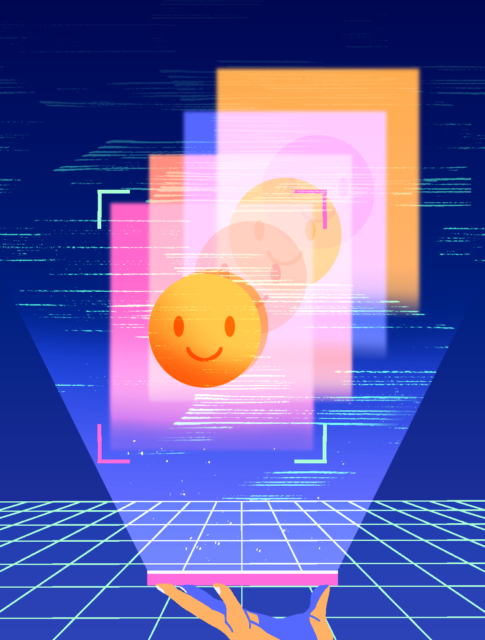UCLA researchers developed a computer-free system that can instantaneously reconstruct holograms, helping further technology in the field of optical processing, according to an Oct. 27 study.
Holograms are a form of data storage that house the information required to recreate 3D objects on a digital screen, which are commonly used to visualize microscopic objects such as algae and bacteria, air pollution particles and viruses.
The Ozcan Research Group has been researching new methods of retrieving the information stored in holograms that does not require the processing power of a computer, said Aydogan Ozcan, the senior author of the study and a distinguished professor of electrical and computer engineering.
The researchers’ approach to deciphering holograms involves replacing computers with a physical network of five 3D-printed layers of screens, said Sadman Sakib Rahman, the lead author of the study and a graduate student in electrical and computer engineering. The screens allow light to pass through, bending the light particles to specific locations on the final layer, he added. The location of light particles on the final layer corresponds to the type and physical shape of the object, allowing the network to recognize and reproduce the scene in the hologram.
Holography is different from normal imaging work, Rahman said. It can capture not only the brightness of light but also how two different light waves interact when they collide, he added.
Rahman said individuals can recover more information through holography compared to familiar imaging processes. For example, it is possible to observe the same image from every possible orientation because all aspects of its form are captured, he added.
Rahman said the conventional method of digitally reproducing the 3D scene using computer algorithms is slow, demands power and is expensive for a research team to perform.
However, diffractive networks do not face the same issues.
“The reconstruction will be performed at the speed of light,” Rahman said. “(The new networks) do not require any external power, and they are very cheap.”
Different factors were considered to promote the functionality of the system. For example, Ozcan said the researchers had to ensure their hologram system could interpret a wide variety of images.
“We took thousands of images … of digits written by humans with their handwriting, formed holograms with those, and taught this diffractive passive computer to reconstruct new handwritten digits that we had never used before,” Ozcan said.
He added that with further training, the system was able to reconstruct holograms of objects other than digits.
However, the research team has not tested a physical version of the system since the approach outlined in the paper was solely verified with numerical simulations, Rahman said. Only with further precision can the team demonstrate the effectiveness of the network, he added.
The research group has tasked undergraduates to expand the capabilities of diffractive networks outside of a laboratory setting, prioritizing practicality of the system as a future goal.
Emir Arda Deger, a second-year electrical engineering student who works with Ozcan and Rahman, said their group is working to refine and broaden their technology, testing the network’s ability to interpret different wavelengths of light.
“We’re basically trying to make this setup more applicable in real life,” Deger said.
Ozcan said it is important to improve the technology to a point in which large volumes of visual data can be quickly captured and interpreted.
“If we can manage to make (the setup) much more applicable in real life, then it will definitely be in use in the near future,” Deger said.

